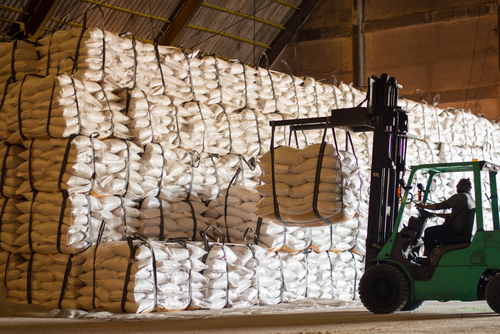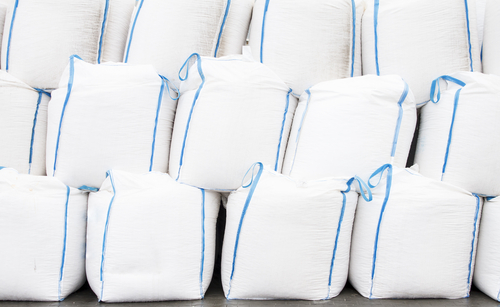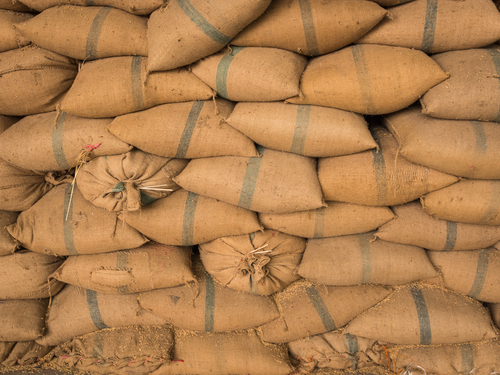
Those who work in the shipping industry must use many different tools and techniques to transport goods. It is important to select the right materials and products to safely transport items. Some items require boxes, bins, or other containers.
When shipping, some items can be transported in Flexible Intermediate Bulk Containers, which are known as FIBCs in the shipping industry. These useful and cost-effective containers resemble a big bag and are good for storing and transporting many products.
History
The history behind FIBCs is not entirely known. Records show they were likely first used in the 1940s. At that time, FIBCs were made from PVC rubber and used within the rubber industry to transport carbon black.
After polypropylene was developed in the 1960s, this was combined with advances in weaving to create the types of bags still used today. FIBCs were quickly put into use by a variety of oil and chemical companies. They could use FIBCs to store powders and similar bulk products.
FIBCs soared in popularity during the oil crisis of the 1970s because they allowed for the transportation of large quantities of cement to the Middle East, which was needed to quickly develop infrastructure in oil-producing countries.
Construction
Today, FIBCs are often constructed from thick, flexible fabric such as woven polyethylene or polypropylene. The fabric can be coated or uncoated, depending on its intended use. FIBCs have various components, such as fill spouts and closures.
They are usually large, measuring up to 48 inches in diameter. They can vary in height, up to 80 inches, and they have a capacity of up to 2,000 lbs., although the bag itself may weigh only 5-7 lbs. There are many types of FIBCs available, and they are constructed in different ways. They are often described according to their construction (such as 4-panel or U Panel).
Typically, FIBCs are loaded and transported on pallets. For unloading, in some cases, FIBCs can be lifted by loops. They are often made with either one, two, or four lifting loops. When the bags need to be emptied, it can be done through a special opening in the bottom (such as a discharge spout) or by just cutting the bag open (if it is not going to be reused). They can be folded and stored flat when not in use.
Usage
Currently, FIBCs are involved in a quarter-billion ton of transport each year. They are used to handle, store, and move all sorts of products, ranging from food to industrial items. FIBCs continue to be popular because they are cost-effective, recyclable, and versatile.
FIBCs are made in different shapes, sizes, and types for different uses. Some FIBCs are specially designated to contain food or food items. Some FIBCs are certified with UN Certification when they meet certain requirements and pass testing procedures.
Innovative individuals continue to look at ways to improve FIBCs and make them useable in more applications. For example, FIBCs can be used to load sand and control water flow in flooding conditions. This is a very helpful but a typical use outside of the shipping industry. Research is also working to develop FIBCs that can hold and filter fluids.
Bulk Bags/Super Sacks
FIBCs are also known as bulk bags and super sacks. These are classified as intermediate containers because of their large size. Typically, bulk bags cannot be moved by hand, but they are not large enough to be considered a full bulk container (in contrast to a truckload or railcar).
Bulk bags and super sacks can be used in a variety of industries including food, chemicals, and even pharmaceuticals. Depending on the types of material to be transported and the needs, bulk bags can be made from materials such as polyamide (commonly known as nylon), types of metallic foils, carbon infused plastics, and polyester.
Another key piece of information to know when using a bulk bag or super sack is its Safe Working Load (SWL). This is the amount of weight the bag has been designed, rated, and tested to hold. It is important to also know the Safety Factor Ratio (SFR) of the bag. A standard bulk bag is typically 5:1 SFR, meaning it can hold 5 times the amount of the bag’s SWL.
Some may wonder if bulk bags can be stored outside. They can, if needed, for a short time, but UV exposure may degrade the materials. To prevent this, bulk bags can be treated with Ultraviolet Inhibitor to assist in protecting the bag (and its contents) from harmful UV rays.
Final Thoughts
FIBCs are a versatile container option for storing and shipping a range of products. They vary in container designs and material for more applications across a variety of industries. This multipurpose container compacts to a fraction of its filled size when not in use, so does not require a lot of storage. They are an economical option for shipping merchandise, too, because they do not require additional packaging and have a low tare weight. They are also a breeze to unload with their lifting loops and discharge spouts.

